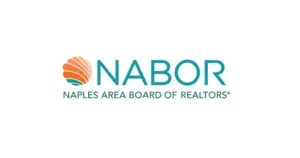A modern real estate website must deliver every listing client’s request instantly, perform flawlessly on any mobile device, and meet MLS compliance requirements on the first review. By pairing WordPress’s flexible design with robust IDX integration, you maintain complete control over both the site’s appearance and its data.
This article walks you through every step to build a site that works like an extension of the MLS while remaining fully in your hands.
IDX in Plain Words
Internet Data Exchange (IDX) is an MLS program that allows brokers to share active listings on public websites. Each MLS board writes its rulebook. Break the rules, and you risk a warning, a fine, or even losing your data feed.
Build any real-estate site with three ideas in mind:
Fresh data builds trust. A “For Sale” home that closed last month frustrates buyers and wastes agent time.
Audits arrive. Boards often run automatic scans for credit lines, last-updated stamps, and disclaimers. One missing line can cost hundreds of dollars.
Search engines prefer clear pages. A well-marked listing page with headings, alt text on photos, and structured data far outperforms a hidden iframe.
Every time you code a listing archive or single page, ask: “How will this look to Google? And does it meet my board’s rule PDF?” If both answers are “yes,” you’re on the right track.
Two Ways to Show Listings
Classic Feed Plugins
Older IDX plugins run on the vendor’s servers. Your WordPress theme loads an iframe or a block of JavaScript that pulls the listings in real-time. Since the content is hosted elsewhere, your hosting remains lightweight. That means you can pick a basic plan around $5–10 per month and watch search bots struggle to see beyond the frame.
Although the setup is fast, design options stay limited. If the vendor updates their widget style, your site changes too. And if that provider slows down or goes offline, your listings will disappear until they resolve the issue with their server.
Direct-to-Database Tools
Tools like MLSImport talk to your MLS using the RESO Web API. Instead of a frame, each listing becomes a WordPress post complete with photos, price, status, and custom fields. That content joins your theme’s templates and page builder, so you control every pixel and every heading.
Each property page lives on your domain. Google bots crawl the address, remarks, and feature list. You earn traffic from long-tail terms like “three-bed ranch Maple Grove pool.”
This approach takes more initial work. You must map fields, select filters, and monitor sync errors. You also need a hosting plan that can handle thousands of posts and metadata queries. In return, you gain design freedom, SEO value, and a site that stands on its own in the event of an API hiccup.
| Feature | Classic Feed Plugin | Direct-to-Database Tool |
|---|---|---|
| Data location | Vendor server | Your WordPress database |
| SEO impact | Low (bots see a frame) | High (crawlable pages) |
| Design options | Limited to vendor widgets | Full control with any modern theme |
| Hosting load | Light | Higher—needs strong hosting |
| Compliance handling | Mostly by vendor | You manage credit lines, fields, and rules |
| Offline resilience | Breaks if vendor server goes down | Site stays up with last synced data |
Inside MLSImport
MLSImport boasts three key strengths: seamless data control, rapid updates, and theme-level flexibility. Here’s how it works in simple steps:
1. Listings behave like native posts
When you map fields, each MLS record is entered into wp_posts as a custom post type. Photos link to the MLS’s CDN, so you don’t fill your server with gigabytes of media. Need to hide confidential notes or show instructions? Flip a toggle in the field map, and they stay out of public view.
2. Hourly sync keeps things fresh
Every sixty minutes, the plugin connects to your MLS board and pulls changes. It adds new listings, updates price drops, swaps in new photos, and removes anything off-market. No waiting all night for a batch job. If a sync fails, the dashboard flags it so you can hit Retry.
3. SEO value on every page
Because each property page lives on your domain, you can optimize the title tag, meta description, and heading structure. Google can read the street address, neighborhood name, and even the text of the remarks. That helps you rank for niche searches like “Maple Grove homes with walkout basement.”
4. Theme harmony unlocks design tools
MLSImport tests with top real estate themes, including WPResidence, Houzez, RealRomes and WPEstate. Property cards, grids, map searches, and page builders all accept imported posts without extra code—no need to maintain separate templates for manual and MLS listings.
5. Trial and pricing
Start with a 30-day free trial to verify your filters and templates. After that, plans run about $49 per month per Site. You still need active MLS login rights, as well as any applicable board fees; however, the subscription covers all sync runs, updates, and support tickets.
Set Up MLSImport with WPResidence
What You Need First
MLS Web API credentials. Contact your MLS data desk or login portal to request API access. Some boards auto-approve; others require a form and a small fee.
WPResidence theme license. Purchase from WPResidence or ThemeForest. Keep the purchase code handy for auto-updates.
Hosting plan with headroom. A managed WordPress host for around $15–20 per month, at least 1 GB of PHP memory, and modern PHP (8.0+) keeps your pages zippy.
Install Steps
- Activate WPResidence. Upload the theme ZIP, activate it, and run the one-click demo importer. That fills menus, widgets, custom post types, and demo listings, so you start with a complete layout.
- Add and configure MLSImport. Upload the plugin, paste your API key, and click Connect. If everything checks out, the dashboard shows your MLS board name and field list.
- Create an Import Item rule. Give it a clear label, e.g., “Metro Area Homes.” Set filters for office ID, city, price range, or agent ID. You can run multiple rules for different segments (like separate agent pages).
- Run the first fetch. The plugin pulls your first batch of listings. A progress bar counts posts, taxonomies, and media items.
- Review the archive and single pages. Visit your property archive. You’ll see live MLS data following any manual listings you added earlier. Open a single page to confirm your template builder layout and compliance footer.
Crafting Property Pages in WPResidence
WPResidence’s template builder treats MLSImport posts just like any manual listing. Drag and drop modules to design a layout that fits your brand.
- Header row. Display the price in large text, accompanied by a colored status badge and a quick map link.
- Gallery section. A slider pulls full-size images from the MLS Content Delivery Network (CDN). You can enable lazy-load, so photos appear as visitors scroll.
- Details grid. Display beds, baths, square feet, lot size, year built, and any custom perks like “brick fireplace” or “solar panels.”
- Interactive map. Use the built-in map view to pin the address and cluster nearby listings.
- Lead capture form. A simple name/email/phone form routes messages to the right inbox based on the agent_id field.
- Compliance footer. A small text box holds the source MLS name, listing broker credit, copyright line, and last-updated timestamp.
Once you drop these blocks into a template, every imported listing adheres to the same layout without requiring extra work. You can also mix manual listings (your personal or off-market homes) with MLS data on other archive pages or home pages.
Table of Contents






